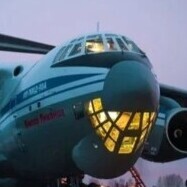Leaderboard
Popular Content
Showing content with the highest reputation on 05/20/24 in all areas
-
With Permission from HB (Beta team and Livery artist), I'm posting some shots from the last JASDF bird I've had the pleasure to work on. There will be 2 tail numbers like this. Here's one of them. Enjoy while you wait for the release. It's been my pleasure to work on these.18 points
-
11 points
-
NOTE: If you purchased the F-4E on the DCS E-shop, you can ignore this announcement. Your install will become available via the DCS in game module manager automatically once the patch goes live on May 21st. 1.After purchasing a key from the Heatblur Store, you will have received an email by Sendowl. The email will contain your license key. License keys can look either like this (early purchase): E370-E4F5-3D9D-A967 (example key) // or like this (late purchase): ED-26BSF-12V7M5F (example key). 2. Go to https://www.digitalcombatsimulator.com and login to your DCS account. After that click on "profile" 3. Go to the left bottom of your profile page, and under "Licensing" select "Redeem Voucher." Then click "GO" 4. Paste your key into the field where it says "Enter voucher code" - then click "REDEEM" That's it! After doing so, you will get a message telling you that you have successfully redeemed your license key. You will then be able to install the F-4 Phantom II module tomorrow via the DCS in game Module Manager, as soon as the DCS update goes live. Should you have lost your email or key, please do not worry. Simply write support@heatblur.se and we will send you your key again. Please include your order number. If you run into issues redeeming your key, please contact ED customer support. We thank you all for your purchases, for your support and for sticking with us on this long road. We hope you all get to enjoy the Phantom tomorrow! Your Heatblur Team7 points
-
We coded him from the ground up, entirely. But rerecording by now some 13.000 + voice lines, would have easily added another 2 years to the development. However we added lots of new voicelines fitting the F-4.7 points
-
COMING SOON In this DCS video, I’ll be discussing new fuzing options coming to several DCS aircraft like the Viper, F/A-18C, and the A-10C II. The new fuzing options allow you select specific nose and tail fuzes for general purpose bombs, laser-guided bombs, INS/GPS-guided bombs, and canister munitions. The new feature also allows you to set the fuze parameters. This can be done from either the Mission Editor, Re-Arm/Refuel Window, and later the DTC payload editor in the Mission Planner for single- and multi-player. In this example, we’ll look at the new fuze option regarding the Viper. From the mission editor, we’ll select the Payload window. Let’s first look at general purpose and GPS-guided bombs and load some Mk-82s. In the top left corner of the station, click on the little triangle to edit the fuze settings. For the nose fuze, we have options for a mechanical M904 crush fuze, DSU-33 airburst fuze, or a plug with options. The arming delay determines how long it will take the bomb to arm in seconds once released from the jet and the function delay determines the delay in seconds or hours that the bomb will detonate after fuze initiation. When selecting the DSU-33, the mean airburst height in feet can be set. Tail fuze options include the FMU-152 Joint Programable Fuze (JPF) that can be programmed from the cockpit, the FMU-139 electro-mechanical fuze, the M904, and plugs. Some bombs will also have an FMU-143 tail fuze option. The 143 is designed for delayed weapon penetration tasks. It’s important to note that except for the FMU-152 JPF, all other fuzes must be set while on the ground, they cannot be altered once airborne. All you can do airborne is make sure the fuze settings in the Stores pages for the F/A-18C and A-10C II and the SMS page for the F-16C match the actual bomb fuze settings. From the window, you can also select the external appearance of the bomb to match USAF or USN standards. We’ll now select Precision Attack payloads and select a GBU-24 laser-guided bomb. Note that because the nose is occupied by the laser-guidance seeker, there is no nose fuze option. You just set the bomb fuze settings based on the tail fuze, in this case, the JPF, 139, and the 143. This window also allows you to program the laser-PRF code that the bomb will be looking for. Again, you cannot program this from the cockpit, only the laser-PRF that the targeting pod will be looking for. In addition to setting fuze options from the Mission Editor, we can also do in-mission from the Arming and Refueling window. Press Left Alt and ‘ to bring up the window. Just like in the Mission Editor, click on the small, yellow triangle on store window. This time, we’ll look at canister munitions like the CBU-105 WCMD, but this also applies to other weapons like the Rockeye and CBU series. There is no nose and tail fuze choices, but you can select the airburst delay time in seconds and the altitude in feet that the canister will open. Further, the revolutions per minute that the canister will spin can be set. The greater the airburst altitude and spin rate, the greater the coverage area the submunitions will spread. However, note that the coverage will be less dense resulting in a lower percentage of hits. This is the first big step in the improved fuze system. Next steps are revisiting the explosion visual effects, particularly for airburst explosions, the damage effect for airburst detonations, and the new fragmentation model.7 points
-
New fuze settings comming to DCS : (And we get a short preview of the new Kola Winter textures)6 points
-
в новостях по поводу общей модели аэродинамики (GFM) есть всего две заметки: 3 дек 2021 https://www.digitalcombatsimulator.com/ru/news/2021-12-03/ 30 июня 2023 года https://www.digitalcombatsimulator.com/ru/news/newsletters/c0a8c1b425ca8694335038102e715bcf/ Я конечно был бы рад следить за дальнейшими новостями но их больше НЕТ. А прошёл уже почти год с тех пор. То что боты умеют пользоваться триммером, это конечно очень хорошо. Но гораздо важнее чтобы боты наконец начали летать по законам физики. Сейчас такое ощущение, они чуть ли не подвешены на ниточки и ими дёргает ребёнок. И за примерами даже далеко идти не надо: Вот просто старт встроенной миссии (модов никаких нет): Специально ловить не надо, результат всегда одинаковый Или вот пример - стартуем потом даём по тормозам: Тут у бота или лунная походка Майкла Джексона или тормоза у ботов отлично держат форсаж. И всё-таки хотелось бы понять что где валяется и когда все это кончится когда будут какие то подвижки в поведении ботов и когда они начнут летать по законам военного времени физики?5 points
-
Surviving FAM-1 in the Phantom. Congratulations on your purchase of the F-4E Phantom II. It is a sweet flying beast, with enormous depth and versatility. It’s easy to fly while being tactically challenging. The aircraft is versatile, and the era it dominated was interesting, a combination that produces hours upon hours of engaging fun. First, don’t be intimidated by the hulking beast. The surprising little secret is that it’s easy to fly. The Phantom is honest and uncomplicated procedurally, the engines are responsive and powerful, and the slats make it feel responsive, but also stable and precise. You point it where you want to go, push the throttles up and man, does it go! As you would expect, Heatblur has delved deep into accurate modeling of systems and aerodynamics, and the result is a nuanced, detailed simulation of the F-4E. You will discover small details as you explore the aircraft and systems, they’ve even simulated the influence of engine exhaust flow on the stabilator due to its anhedral. How cool is that? From broad testing experience and SME feedback, I recommend starting with a pitch curve of at least 10 for the F-4. The simulator is faithful to the real F4E, which is sensitive in pitch. Experiment and refine your axis tuning for your controller from there. I am currently using a non-FFB stick with a 4 inch extension and heavy spring tension, 12 works for me. Map your controls. You only need pitch, roll, rudders, brakes, gear, flaps, nose wheel steering, speed brakes, trim in all axis and drag chute for this hop. Keyboard and clicking will be fine for the rest. We won’t be killing MiGs just yet. This guide is meant to be a quick and dirty “FAM-1” guide to get you in the air and safely back to earth. We’ll also have some fun in between. I know you’re eager to give it a try, so skip startup and begin on the runway, ready to launch. Fly a clean jet today, or throw on a centerline drop tank for starters. The trim will already be set (understand that due to the way the bellows/trim system interacts, until airspeed increases, the stabilator will be positioned full leading edge down on the ground), engines running, check that the flaps are down, let’s go. Normal Takeoff and Climb. Apply full afterburner, position stick full aft when Jester calls 80 knots and hold it there. Nose-wheel steering until the rudder becomes effective ~70KIAS (the NWS button must be held during operation). If you drift and need nose-wheel steering to correct, then center the rudder pedals before re-engaging. With full aft stick, the aircraft will rotate on its own when it’s ready to fly, ease off back stick to hold it at 10-12º nose up pitch attitude. Our intrepid F-4 SME’s and and recommended this technique, it works beautifully. Gear and flaps up immediately to avoid overspeed. Both have limit speeds of 250 KIAS. Min flap retract is 180 KIAS, which is only a consideration during military power takeoffs. Jester will let you know when they’re up. Terminate burner at 300 KIAS. You’re in the air, easy peasy, nothing to it. Climb at 350 to intercept .9 Mach. Mil power climbs at 350 KIAS initially require just over 20º of pitch. In Max afterburner, it will climb into the mid twenties at .9 Mach at over 30º nose high. Beast mode. Setting 3000 pph per engine results in a cruise Mach between .84 at FL 250 and .90 at FL350. That’s a fuel burn of 100 pounds per minute. Fuel planning couldn’t be simpler. Mil power at FL350 tops out just below Mach, around .97 IMN. Ease the nose down and it will go supersonic without afterburner. There is a little Mach Tuck going through transonic. Overall, the pitch changes are mild, trim is sensitive. Be quick with your thumb. Operationally, the F-4E is a Mach 2 aircraft. In level flight, it’s fastest at 35,000, and can achieve the dash one charted speed of just over Mach 2. Unload in a dive, and if you sport an adequate moustache, you can hit 2.2 plus. You can have fun figuring out the profile for that for yourself. At sea level, a low drag configuration tops out at 1.12-1.15 IMN. Adding external stores will reduce max Mach proportionately. Maneuvering Flight ROLL AUG off for maneuvering. Always roll using coordinated rudder and aileron. The higher the AOA, feed in more rudder as ailerons are less effective. Rudder only rolls are smooth and predictable. Reducing AOA increases roll rate. Experiment at different AOA’s and speeds, it will come to you quickly. Best sustained turns with typical Air to Air load outs at medium combat altitudes (SL to 15,000) range from 520-480 KIAS. Even with light pitch forces, flying a consistent, sustained turn is relatively easy. Smooth corrections pay big dividends. Control bank angle primarily with your feet. I checked the sustained turn G capability today from SL to 15,000 MSL, and it’s on the money. Gross weight affects performance of course, but if you’re doing your part, you’ll be able to hold 7.0 G on the deck, and 5.1 G while turning level at 15,000 MSL. I’m quite impressed with how stable the Phantom is at high G loads. You can already sense that the F-4E needs and loves airspeed. Use a 500 KIAS entry speed for a mil power loop, 450 with burner. A 4-5G pull up to 19.2 units will result in 200-230 knots or so over the top. It takes a lot of intentional baffoonery at very low speeds to depart controlled flight, which commonly shows up as a nose slice opposite to the direction of aileron input. The recovery controls are neutralize ailerons and rudder, unload with stick well forward (5 degrees AOA is a good target), and pull the throttles back to idle power. If the engines compressor stall, no big deal, go to idle, they recover quickly. Continue to hold up to full forward stick and let the aircraft do what it wants to do during post stall gyrations. As nose falls below horizon, and speed increases to 200 knots, you are flying again, so it’s safe to carefully roll with rudder and aileron to wings level, then pull up in light buffet, approximately 17 units, don’t exceed 19.2 units in the pullout. Spin recovery controls are rudder opposite the yaw/turn needle and lateral stick into (the primary recovery control is aileron), but perhaps the biggest shock having heard all of the lore, it is difficult to get the slatted F-4E to spin, even intentionally. That said, if the aircraft doesn’t recover, pull the drag chute. The aircraft will pitch nose down and accelerate. Either jettison the chute or let it fail when airspeed exceeds ~250knots. If you see a nose slice, it’s probably the ailerons causing it. Center the stick, reduce the angle of attack. The AJB-7 attitude indicator is so well designed that it can be used to fly precise aerobatic maneuvers, including rolling out on a specific heading, without looking outside the cockpit. The indicator is surrounded by the primary flight instruments, so in addition to the heading marks on the AJB-7 itself, you can see airspeed, AOA, altitude and the VSI in your peripheral vision, without shifting your scan. It’s all right there. Try this. Referencing the attitude indicator, pull up wings level and peg the nose exactly in the middle of the black dot that depicts 90º up, then pull the throttles to idle and do a lovely tail slide. If you get it right, the aircraft will back down, and full aft stick will make it flop forward, full forward stick will make it flop on to its back. Hold controls neutral, and it will pendulum past vertical at the bottom, where inertial dominates aerodynamics, just as a real fighter does. The AJB-7 clearly indicates where the closest horizon is to roll and pull out with minimal altitude loss. You can use it to pull out of a hairy maneuver on a specific heading, bugging out directly at home plate, where you can change out your underwear. Landing Max landing weight is 46,000 pounds. We aren’t too concerned with limitations for our hop today, but you don’t want to get into bad habits either. That’s about 12,000lbs of fuel for our configuration today, shouldn’t be a problem. At max landing weight, a stable on-speed landing AOA of 19.2 works out to 168 KIAS. If we were down to 3000 lbs of fuel using today’s configuration, on-speed would be 151 KIAS. Overhead breaks at 350-400 KIAS work well. 4000 pph will result in 400 KIAS on the run in. In this speed range, idle power in the break is fine, speed brakes are not necessary. If you do use the boards during a faster break entry, they should be manually retracted on downwind. If you are struggling to hold altitude when dirty, then you forgot to retract the speed brakes. Seat full up for landing. It’s difficult to see over the nose, so you may need to use RCTL+RSHFT+8 to raise cockpit camera. Extend gear and flaps at 250 KIAS, get the power back up as the aircraft decelerates towards 180 knots. That’s minimum speed on downwind, but slow to the “on-speed” AOA of 19.2 units (the big white square) before or during the first part of the final turn. Jester will talk you through the simple Landing Checklist. For reference, when level downwind, pitch will be 10-11º, and ballpark fuel flow with be ~4000 pph per engine. The aural tone and indexers give plenty of feedback. Gear and flap extension both cause a very mild pitch down. Flaps extend when decelerating through around 210 KIAS. Flaps will retract in the air if over-sped. Like most fighters, you’ll need to add power around the approach turn to control rate of descent. It doesn’t take much. Perform all rolling in the pattern with coordinated rudder and aileron. Trim and pitch are sensitive in the landing configuration, faithful to the aircraft, so smooth inputs are required. Fly with your fingertips. Due to the -5.25 degree thrust line of the J79 engines, adding power causes the nose to pitch down, reducing it causes a pitch up. It’s exactly opposite of the F-14. When you push with your left hand, you will need a slight pull with your right and vice versa. It’s also a happy little airplane during approach, with the AOA tone beeping and chirping. In fact, it’s quite easy to get on the runway in one piece. All of that cheerful noise should be a clue that the Phantom is flown while referencing AOA in the landing pattern. If you are struggling, try flying a little fast, with the AOA needle at the bottom of the white, “on-speed” index mark, around 17-18 units. We aren’t landing on the ship, so a little fast is fine as you get familiar, you have plenty of runway to work with. Use the “bug on the windshield” for glide path reference. Just like landing a Cessna. If you are addicted, you’ll quickly wean yourself off of HUDs. If you get behind the power curve, above 19.2 units or more, understand that excessive AOA causes enormous drag that if unchecked, will dramatically increase descent rate. To recover, forward stick to reduce AOA immediately is critical, while adding lots of power. You need both, don’t try to power out, reduce AOA with pitch. Danger of stall buffet and nose slice lurks above 25 units. In the flare, you may need to look to the left or right through the windshield side panel to see the runway, like Lindbergh did flying the Spirit of St Louis. It’s where you look when landing tail draggers or even fat nosed single engined Cessnas. Some instructors call it “The Lindbergh Reference”. I find that carrying power into the flare makes for a smoother landing. Arrest the rate of descent before you ease the power and let it settle. If you are fast, then pulling more power in the flare is fine. When you try a carrier landing, and we all know that you will, keep in mind that you will need a significantly wider abeam distance. The F-4E lacks the BLC flaps of the Navy versions, so you’ll be flying a much faster approach turn with a wider turn radius. The LSO’s will be nervously eyeing the net. Good luck. Single engine approaches are simple. Only real change is you a little faster, at 17 units, the yaw due to asymmetric thrust is easily controlled with rudder, even in burner. Fly a straight in approach using gentle bank angles and you’ll be fine. It helps to get rid of most of your fuel before landing with an engine that is “uninterested in further toil”. The F-4E also has a nifty flight director on it’s remarkable AJB-7 attitude indicator that makes ILS approaches a piece of cake. ILS freq is set on the pilot’s left console. The controls for what drives the needles are on the lower right side of the instrument panel. Give it a whirl, flight directors are amazing. After touchdown, lower the nose, pop the chute, hold the stick aft, and enjoy Jester’s compliments on your landing as you roll out. I bet that you land it on the first try. When clear of the runway, there is nothing like opening the canopies and enjoying the sound of two J-79’s while enjoying some fresh Phantom Air. Soak up the satisfaction of a flight well-flown as you taxi back to the ramp. You just experienced what it is like to fly an iconic fighter that continues to menace the skies even today. Damn, that was fun. Maybe that's why Jester loves to say, “We have the best job in the world.”4 points
-
Have you ever been to northeastern Scandinavia? It's at least 95% forest or steppe. So, yes the trees are important. Imagine having New York skyline in Dubai on Persian Gulf map. Same type, but not the same style. I have also never said that I don't like the rest of the map. But apparently, according to your post, it's forbidden to ask for improvements and point out inaccuracies? And just accept everything as it is? What kind of attitude is this? The community is putting in a lot of work to find out the problems, create solutions (like mods) and helping the devs improve everything. Your post is like stabbing them in the face by saying "ask for refund or fly other map". No! Always keep improving the products and ask for more. This is how DCS grows.4 points
-
4 points
-
I guess the point of the OP is in its more broad sense, why is not everything detected shared in L16? As far as i know for example AWACS shares enemy fighters but not an enemy TALD or cruise missile that you can perfectly detect on your radar (i mean in DCS). Why would a EWR or AWACS know what the radar contact is? A radar track is a radar track. Enviado desde mi ELE-L29 mediante Tapatalk4 points
-
Request: Additional AI aircraft, even if featuring relatively simple 3D models, avionics modeling, and simplified FMs. Purpose: Additional immersion into time periods or scenarios. Examples: A-6A/E, A-7B/E, KA-6D. The current F-14A is missing all of the appropriate aircraft to accompany it on the deck and in the air. In the case of the A-7B it would perhaps be best to model it as being incorrectly able to fuel from both tanker types so it can be skinned and passed off as an A-7D. It would also be "nice to have" a C-2 COD and an earlier E-2. MiG-23MS, MiG-23M, MiG-21PF, MiG-21F-13. Opponents to the upcoming F-4E. The 23M and MS could be based on the existing 23MLD with alterations to make them suitable substitutes. F-111A/F. Flew in Vietnam, Libya, Desert Storm. I think the D and E models are similar enough to the A to be skipped over, and the F-111G unimportant enough to skip as well. Would make great additions to missions using the upcoming F-4E, and any DS inspired missions on the Iraq map. Suggestion: If ED can't handle this on their own then make it a third party add on and market it as an expansion pack. This could even include ground objects such as more cold war SAM systems like the SA-3 Goa, SA-4 Ganef, cold war era tanks, ships, etc.3 points
-
Its on the way [emoji106]3 points
-
Its the 21st here in NZ, Happy Phantom Day3 points
-
3 points
-
Haha, yep. Even though I already have Patriot systems for both USA and Sweden I really wanted to add the German version since it's unique as it's mounted on a truck. Which is very good for quick deployments, like in Ukraine. And I also chose to implement the current older German systems, which is the PAC-2 GEM and MPQ-53 radar (none of which are featured in my USA or Sweden pack).3 points
-
Hi @WHOGX5 This is a known issue, currently just not on top of our priorities. But thank you for bringing this to us.3 points
-
planned with the fuzes update, and shown in Wags latest video as an option. thanks3 points
-
So all the already released or soon to be realeased product announcements are not satisfying? new DLC campaigns F-4E FC2024 Kola CH-47 Afghanistan Iraq Pacific Threatre units MiG-29A Hard to satisfy you but I get it - I don't see F-15C on the list either3 points
-
I'm sure you didn't, because this wasn't actually said anywhere. Why do you persist in making straw men instead of just addressing what was actually said? Again, nowhere did TheFreshPrince state that only the trees matter and nothing else does. You're pulling this straw man nonsense from nowhere. It shouldn't be surprising that a thread discussing the trees primarily has responses that concern the trees and doesn't have many responses that are irrelevant to trees (such as the names of places or where the roads should be)... Oh of course. Sorry, I forgot that nobody should ever advocate for improvements. This is subjective, but I don't agree whatsoever, I don't see much resemblence in specifically the trees in these 2 images. The former looks like something I'd expect to see closer to the equator, like the Caucasus map.3 points
-
Если разработчик слышит свою аудиторию и пользователей, измениться что-то непременно должно. 25 лет прошло с момента выпуска фланкера, а модели те же. Это ведь мягко сказать стрёмно. Основная масса, как была так и осталась лоуполи. Юзать вместо Ил-38 орионы. Никто не ноет, разрабы молчат, им плевать. Хочется услышать что-то новое. А тут книжки пилотов нужнее. Я в целом то понимаю, почему так. Потому что люди упороты в книжечки, какую-то занудную ерунду, усы пилотов, часы, шлемы. На то, как выглядит и может выглядеть сим, где есть множество разнообразия хотя бы среди наполнения траффика, военной техникой - это видимо не про нас.3 points
-
Sorry mate, as usual people tends to forget quickly. HB was a part of Leatherneck and they abandoned the team leaving them alone with few resources. It's not HB is better, it's M3 is what it is right now because since HB abandoned they have been unable to rise their head from the punch. But luckily F4U will be a success so they can finally hire more people and get better after so many years.3 points
-
Peshawar AF base lays well inside the detailed area of the planned East part of the map. Is a mix use civilian/military with a central part dedicated to civilian flights and the nort and south areas for air force use (check pics). Why is important? During the Soviet invasion of Afghanistan, Peshawar was base for No15 squadron, equipped with the Shenyang F-6 (in DCS we should have to use the MiG-19P), but they saw several engagements, but no kills: Soviet-Afghan War During the Soviet Afghan war, Soviet and Afghan warplanes would occasionally cross into Pakistani airspace while pursuing Afghan Mujahideen forces which usually resulted in Pakistani infrastructure and Afghan refugee camps getting bombed. Resultantly, the squadron was deployed at Peshawar Airbase for Air Defence Alert duties. Throughout its service at Peshawar, the Squadron's fighters intercepted enemy warplanes only twice. First a Soviet Ilyushin Il-26 on 1 March 1980 and on the second occasion, it's fighters intercepted a couple of Mig-21s in February 1986. However, on both occasions the Squadron's pilots were ordered not to engage them. The lack of F-6 performance against the fast soviet/afghan jets helped the US to sell the F-16 to Pakistan, the F-16 performed fair better and get some confirmed kills.2 points
-
Latest I have Pedals 0 - 100 - 100 -Curve 5 Slider and invert checked (MFG pedals) Pitch 0 -50- 50- 0 Roll same 0 - 50 - 50 - 0 Collective 5 - 100 - 100 Curve 30 . Collective comes in at 40% Virpil collective, Warthog with 200mm extension.......finger tip moves. Possible starting point for you Nimbus2 points
-
If you go to the F-16.net website and search for PACAFI, you'll find a USAF document which lists the standard loadouts of multiple USAF airframes from the year 2003. If you look at the 35th Fighter Wing, which operates the F-16CM-50, in their standard loadouts you'll find both CBU-71's, CBU 89/104's and Mk-20 Rockeyes. The CBU-71/89/104 are not present in DCS whatsoever at the moment, but the Mk-20's are already in DCS but simply not available for F-16's.2 points
-
But should the drag penalty of grid fins be not around the transsonic region? Here the missile has a hefty penalty over the whole Mach range. On R-77-1 extra effort was spent on optimizing the shape of the missile for drag reduction, yet the grid fins remained. If they were as bad as in DCS they would be the first thing to go (or not be implemented at all in the first place). I think that the current drag is simply a relict from the older days of DCS / Flaming Cliffs, where AIM-120 also had more drag. We have two aircraft in DCS that use this missile, so it deserves some love and attention as well!2 points
-
2 points
-
fixed the model for the launcher these are the assets of SAMP/T https://imgur.com/a/nBaYcx82 points
-
2 points
-
2 points
-
Landing patterns at airbases Currently, AI aircraft can fly the overhead approach, enter the pattern, intercept final smoothly and make a landing pass only to the carriers. Does the Supercarrier Module do this, or is it in basic DCS? Like Supercarrier Case 1 (VFR) and Case 3 (IFR) landing patterns but for airbases. I think it would be a lot more efficient in recovering AI aircraft to the airbase. I don't know about other countries, but at US airbases, when weather permits, fixed-wing aircraft generally return to the base for landing by flying a high-speed visual approach to an overhead break, enter the landing pattern on the downwind, lower gear and flaps and fly smoothly to final and make a nice, quick, graceful landing...from formation flights of 1 thru 4 aircraft. ...just like AI makes to an aircraft carrier, now. Can we get that? Can we also get the option to put AI aircraft in a practice PAR pattern in VFR conditions and actual PAR pattern in IFR conditions at airbases? Also, can the AI aircraft do a realistic, long, smooth roll-out after landing instead of the current touchdown and "super-braking" and "super-accelerating"? Bombing patterns Can we also have an option in ME to set AI aircraft into a bombing pattern, as described starting at time 12:36 to 15:15 in this video, "U.S. AIR FORCE F-4 PHANTOM CONVENTIONAL WEAPONS DELIVERY DIVE BOMBING TRAINING FILM 68924". This is perfect for a flight of 4, but could also work for 1, 2 or 3 aircraft, where a user-piloted plane could be flown in an open position in the flight, if desired. I've read accounts of this and similar patterns being used in Vietnam to attack targets. I think generally on lightly defended targets, though. This is an example of a simple dive-bombing deliver. There could also be a similar pattern with a low-level, 500' AGL approach from base-leg to final with a 45-degree offset final to a pop-up maneuver to make the dive delivery, and a jinking climb to pattern altitude after pull-off from the dive delivery. These patterns probably work primarily in lightly defended environments not defended by modern SAM systems.2 points
-
2 points
-
“Jester” isn’t a person, it’s a system. Similar to how pilots refer to any autopilot, from a simple single axis wing leveler to a triple redundant, CATIII Autoland capable auto flight system as “George”.2 points
-
В таких темах обычно разработчики ничего не комментируют кроме наверно вот таких «шуток» как выше. А вопрос поддерживаю полностью. Хотелось бы понять есть планы на эту тему? Платный пак техники?2 points
-
2 points
-
The Viggen doesn't have any actual magnetic compasses. It has two course gyros, main and backup. The backup course indicator (bottom row, immediately to the right of the CI) uses the backup gyro. That gyro is always referenced to a magnetic sensor that points to magnetic north, so it always displays magnetic heading and should not be affected by the KURSKORR knob (declination). I'm not sure if that last part about the declination knob has ever been correct in DCS Viggen but it doesn't really matter, nobody ever looks at that thing anyway since nav system faults aren't really emulated in a meaningful way. The FLI 37 (ADI) and the course ring around the CI both use the main gyro. If there is weight on the nose wheel, the main gyro is referenced to a magnetic sensor, so on the ground they should normally show magnetic heading if (and only if) the magnetic declination knob is set to 0. If you turn that knob on the ground then the indicators should move. When you spawn in it may be initialized to the correct value for the area already, and if it is set to the appropriate value then the course indicators should show true heading. During the takeoff roll, the CK37 compares the stored true heading of the runway with the magnetic heading (corrected for declination, as input with the knob) and if they match within +/- 15° then the course is initialized to the runway's true heading. After that point the magnetic sensor is disconnected from the course gyro and only true heading is used everywhere (except in the backup course indicator). If the magnetic heading and the runway heading do not match, the CK37 first checks the opposing runway heading, then the heading of any other runways on the same base (assuming the base was input with a REF code) and if any match is found, the true heading of that runway is used as the initial course. If no match is found then no course initialization is done and you get a NAV SYST warning. That last bit about matching opposing heading and other runways I don't think is implemented in DCS Viggen. In the real aircraft the magnetic reference is reconnected again if there's a CK37 fault or a primary data fault but I don't think that's emulated in DCS either. In other words, the nav system really doesn't care about magnetic heading very much; it's only used on the ground and to sanity check the initial heading. The declination in this case is only about 5° which is within tolerance, so as long as the runway's true heading is programmed into the CK37 it doesn't matter if the KURSKORR knob is set to 0 or to the actual declination for the area. The backup course indicator is probably wrong, though.2 points
-
Ну, так тем более можно понять и то, о чём пишу я. А не про нытьё разглагольствовать. Это разве хорошо, что какие-то моменты на протяжении такого времени остаются проигнорированными? Вот и мы тоже с друзьями сидим и думаем, ну как так? 25 лет это же очень много, а номенклатура техники почти такая же осталась. Даже уже те модели, что были обновлены, устарели.) Работа идёт, несомненно. Не понятна логика разрабов, почему нигде об этом не написано и нет новых анонсов? Вот готовим новую технику, будет она платной, что и как там будет. Почему никакой инфы? Надеюсь через года хотя бы три это будет, а не через 20 лет, когда уже это не нужно будет. Столько техники нет в этом симе, а ведь было бы здорово оживить его наполнением. И не нужно было бы ставить орионы вместо Ил-38.2 points
-
2 points
-
I used to own a business, and from time to time I would do something like this in order to give my clients (who didn't have all money upfront) some options. It was my way of being accommodating (i.e. nice) to my clients. It backfired almost all the time because those clients never could really wrap their head around thinking of others perspectives. The ones who could afford it were mad because things got complicated. The ones who couldn't weren't going to buy my stuff anyways. Lose/Lose. ED is just trying to accommodate everyone here. They're actually doing a pretty good job of it by making the whole map available and only charging for detail. When you look at it from someone's perspective who doesn't want to shell out the whole price, it makes sense. If you look at the price difference from ED's perspective, that extra people are paying for is for the code work to break up the maps. Think of it as a form of processing fee or interest on a loan. If I bought this map on a credit card, I'd be paying the same price as guys breaking it up.2 points
-
А не смущает то, что большие самолёты летают, как упоротые? Я вот щас рисую пак текстур на Ил-76 и Ил-78, посмотреть можно скрины в ветке Красивый скрин. Так вот, когда ставишь траффик Ил-76 - это ужас ведь. Они летают, как кретины, с кренами по 45 градусов, постоянно покачивая крыльями, подруливая, то резко вверх, что резко вниз. Ну не летает так крупный самолёт. А Ту-22М3? Пройдя ппм, вместо плавного роспуска и захода по коробке (там ваще нет логики коробочки) дают по форсажам с тангажом в космос, потом резко убирают форсажи, резко вниз... Ужас. 25 лет прошло с момента фланкера, ничего не заменено.2 points
-
2 points
-
See, IronMike, is a tribute to the Top Gun Jester. It comes from Micheal Ironside. But we never said that JESTER, is a tribute to Top Gun. Even though it is fair enough to assume that.2 points
-
Everything required as long as the other aircraft isn't AI and has their code running. That's exactly the issue. Doing it between player aircraft isn't hard. It would require work for the AI ofc for them to present correct responses and react correctly to the responses their radars get. But it's not rocket science and there's plenty of data available on how they work to model it.2 points
-
Русскоязычным доступ не дают. Ибо... А они у нас есть? Я кроме ДжастФлая никого больше то и не знаю. ( Не в обиду). Ну еще Бемби (хе- хей! всем привет чуваки!!). Но уже редко вижу его видео. 4 - 6 часовые никому ненужные стримы в расчет не берем. Это обзором назвать нельзя.2 points
-
DCS: F-16C | Alignment Procedures To further improve the accuracy of the F-16C INS and GPS alignment system, we’ve implemented significant improvements that will later be rolled into other DCS aircraft like the F/A-18C, AH-64D, and A-10C. Proper alignment based on the GPS-era and a normal versus STRD HDG alignment. Proper alignment is critical for accurate navigation, sensor slaving, and weapon accuracy. Known issue: In-Flight Alignment in pre-GPS era requires additional couple of FIXes in addition to the first two OFLY FIX to calculate the velocity properly. These FIXes can be made in any suitable mode: TPOD, FCR, HUD, OFLY, the only requirement is to keep the aircraft at a straight line between the fixes. Of course, the fixes should be done precisely. Once this addressed in a later update, I will create a in-depth instruction video on this topic. GPS-Era / STRD HDG Alignment First, let’s start with the most common form of alignment in DCS, GPS-era using a STRD HDG alignment. This is the simplest, fastest, and most common for single- and multi-player. With power to the avionics systems, set the INS switch to STRD HDG and then set the GPS switch to ON. It’s important that the MIDS switch remains in the OFF position. After about 12 seconds, you’ll see an ALIGN indication on the HUD. You’ll then verify the STRD HDG alignment by going to the DED INS page and check the latitude, longitude, and altitude against your location on the F10 map view. After about 60 seconds, you should be aligned and confirm this by the ADI flags being retracted; HSI showing correct magnetic heading, DME, bearing pointer and CDI deflection; roll and pitch correct on the HUD; and RDY should be flashing on the INS alignment DED page after less than 2 minutes. We can now switch the INS switch from STRD HDG to NAV. On the DED INS alignment page, confirm that GPS TIME is displayed one minute after the GPS switch is set to ON. Note that this may take longer if the aircraft is under cover like a hardened aircraft bunker. As such, it is best to align out of cover. With good GPS TIME, set the MIDS switch from OFF to ON. After alignment with GPS correction, you can expect no more than 40 meters of INS drift. Further, if you zeroize the GPS or are flying a REDFOR Viper, you can expect an INS drift of 100 meters or more. GPS-Era / Normal Alignment A normal alignment is much like the STRD HDG Alignment, but we’ll need to manually enter the aircraft starting location because we’re not using a known, STRD HDG location. To start though, we’ll in the INS switch to NORM and not STRD HDG this time. Then set GPS to ON, verify MIDS to OFF, and wait for ALIGN on the HUD after about 12 seconds. The big difference is now going to the DED INS alignment page and entering the aircraft’s latitude, longitude, and altitude as shown on the F10 map. Once done, we’ll verify ADI, HSI, and HUD as before and wait for the flashing RDY indication on the DED INS alignment page after about 8 minutes. Once flashing, set the INS switch from NORM to NAV and verify GPS TIME indication. With that, set the MIDS switch from OFF to ON. These will be the most common alignment scenarios when performing a cold start. However, you may come across a mission or campaign with a date prior to the GPS era. In that case, we’ll only align based on INS with no GPS correction. Non-GPS Era / STRD HDG Alignment Like the GPS-era, set the INS switch from OFF to STRD HDG and wait for the ALIGN indication on the HUD. Then, verify the DED INS alignment page latitude, longitude, and altitude to the F10 map data and verify ADI, HSI HUD, and wait for the flashing RDY indication. We can now move the INS switch to NAV. Once airborne, you’ll then want to conduct alignment FIX procedures using Overfly, targeting pod, HUD, or FCR to remove accumulated INS drift. Please see the earlier videos on fix taking. Non-GPS Era / Normal HDG Alignment The last weight-on-wheels we’ll look at is doing a normal alignment at a mission date prior to GPS. Set the INS switch from OFF to NORM and wait for the ALIGN indication on the HUD. From the DED INS alignment page, enter the aircraft’s latitude, longitude, and elevation using the F-10 map. Next, verify the DED INS alignment page latitude, longitude, and altitude to the F10 map data and verify ADI, HSI HUD, and wait for the flashing RDY indication after about eight minutes. We can now set the INS switch to NAV. Once airborne, you’ll then want to conduct alignment FIX procedures using Overfly, targeting pod, HUD, or FCR to remove accumulated INS drift. Please see the earlier videos on fix taking. So far, we’ve only been talking about weight-on-wheels alignment procedures. We’ll now shift gears and discuss in-flight alignment. We’ll start with the more common GPS-era procedure. GPS-Era / In-Flight Alignment First, set the INS switch to FLT ALIGN and flight straight and level until the ADI flag is retracted. You’ll see INS FLT ALIGN on the DED and STBY on the HUD. Maintain straight and level flight and enter your compass magnetic heading within 20 seconds on the DED and verify that the pitch ladder is displayed on the HUD. Continue to fly straight and level until the ALIGN is replaced with the maximum G value on the HUD and then return the INS switch to the NAV position. Non-GPS-Era / In-Flight Alignment Last, for an in-flight alignment with no GPS, set the INS switch to FLT ALIGN and fly straight and level until the ADI OFF flag is removed. INS FLT ALIGN should appear on the DED and STBY on the HUD. Fly straight and level and enter your magnetic heading on the DED within 20 seconds while ALIGN appears on the HUD, replacing the maximum G indication. We’ll now perform an OFLY FIX within the next 30 seconds. It is required we perform a second OFLY FIX within two minutes to correctly perform velocity calculations. Keep flying straight and level, and once the maximum G field replaces the ALIGN indication, you are done. For best INS alignment, you may wish to perform an OFLY, HUD, FCR, or TGP alignment every 15 minutes for best possible navigation and acceptable weapon accuracy. Manual Alignment as Backup The manual alignment is a backup alignment designed to provide get-home capability only.2 points
-
Recently Browsing 0 members
- No registered users viewing this page.



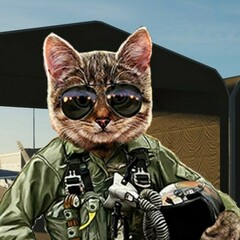
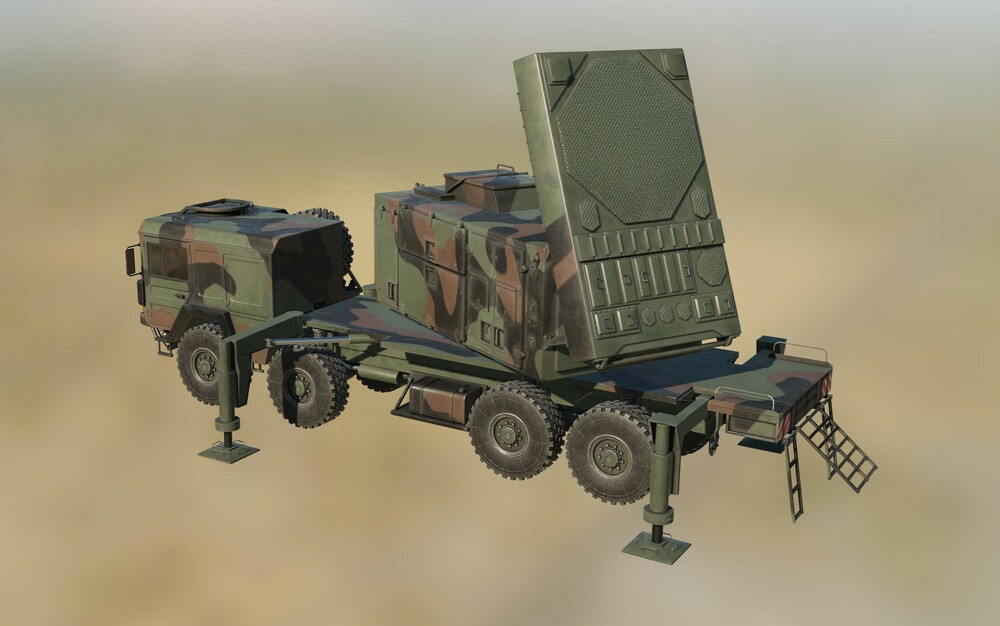
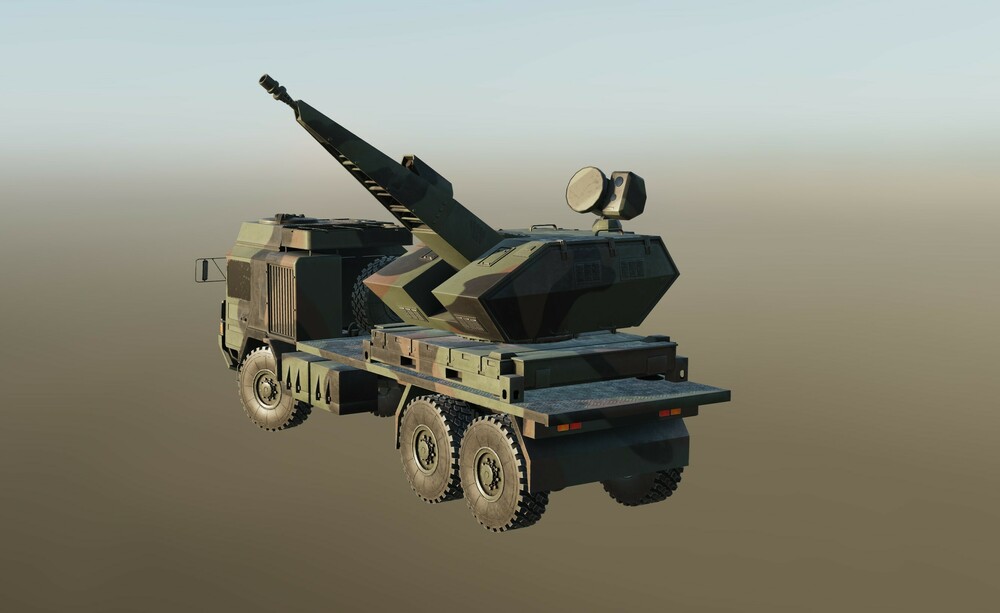

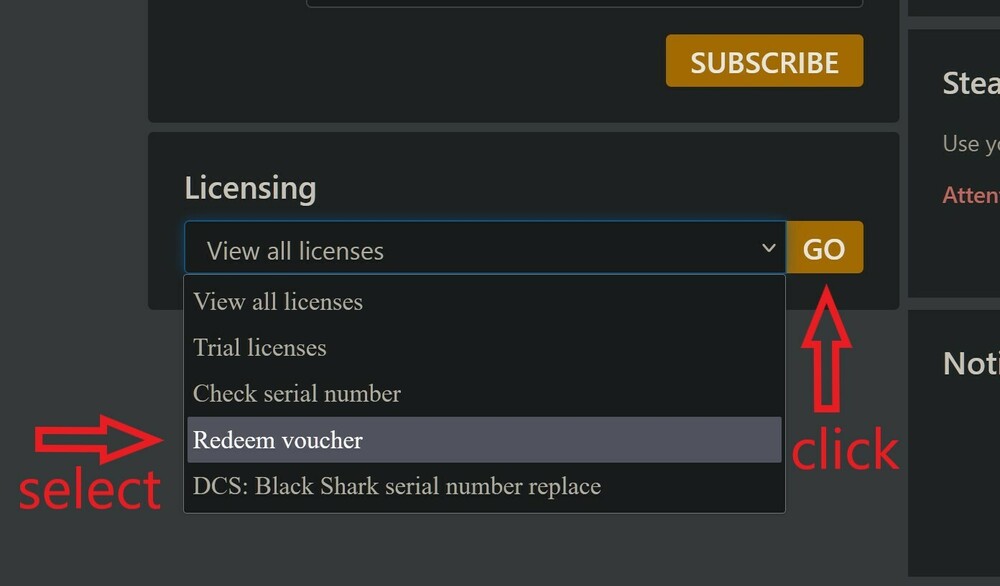


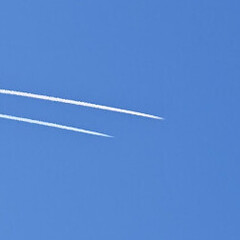


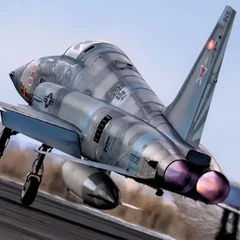

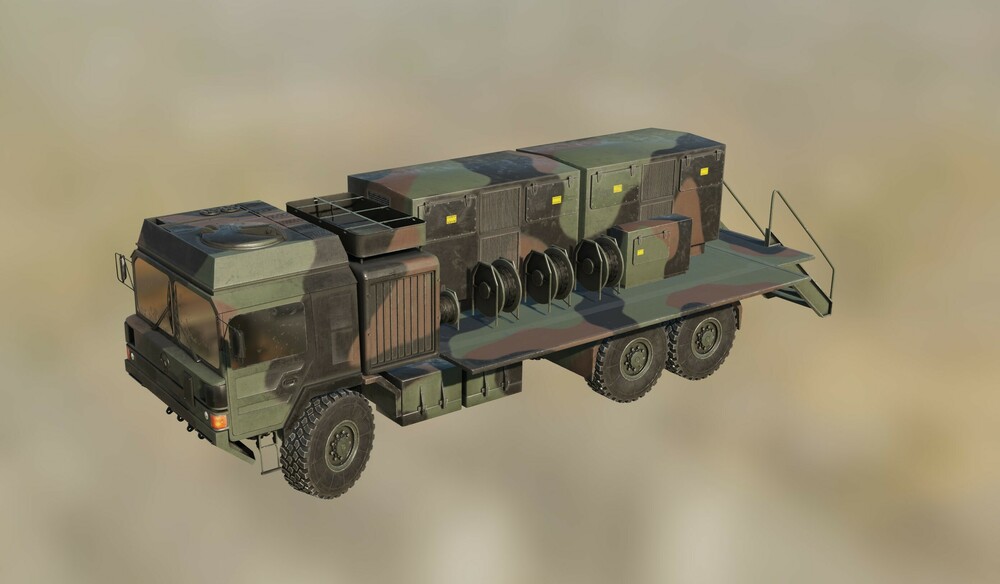
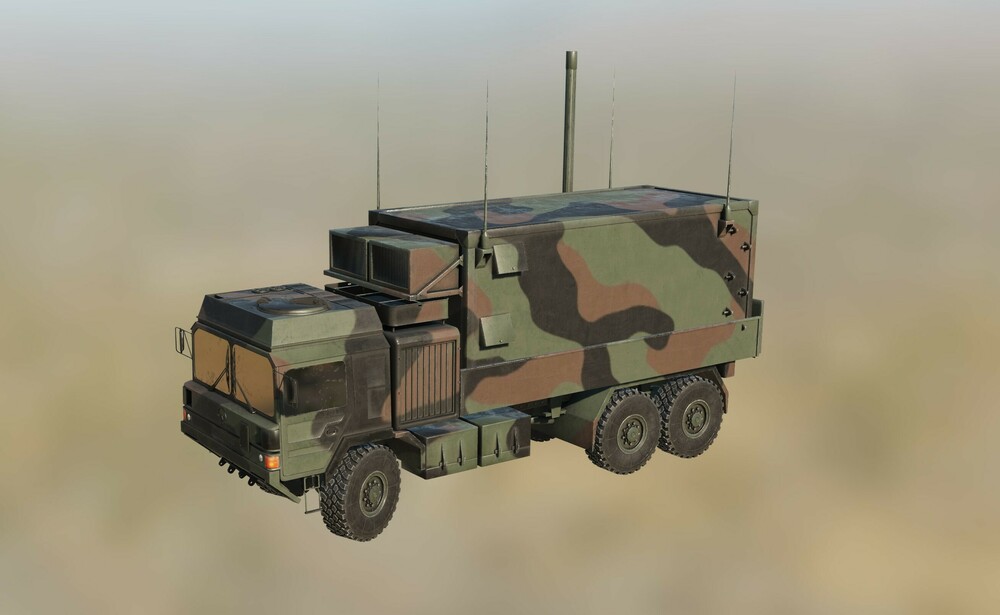
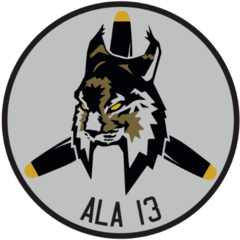

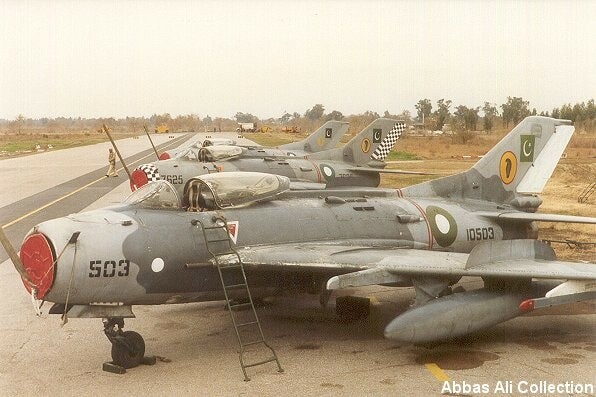
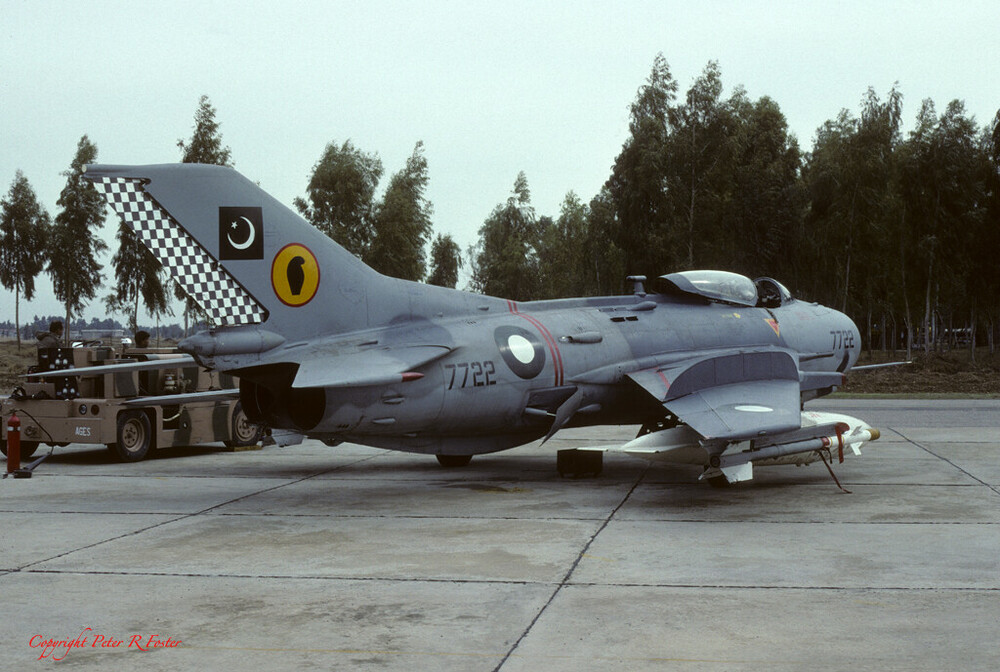
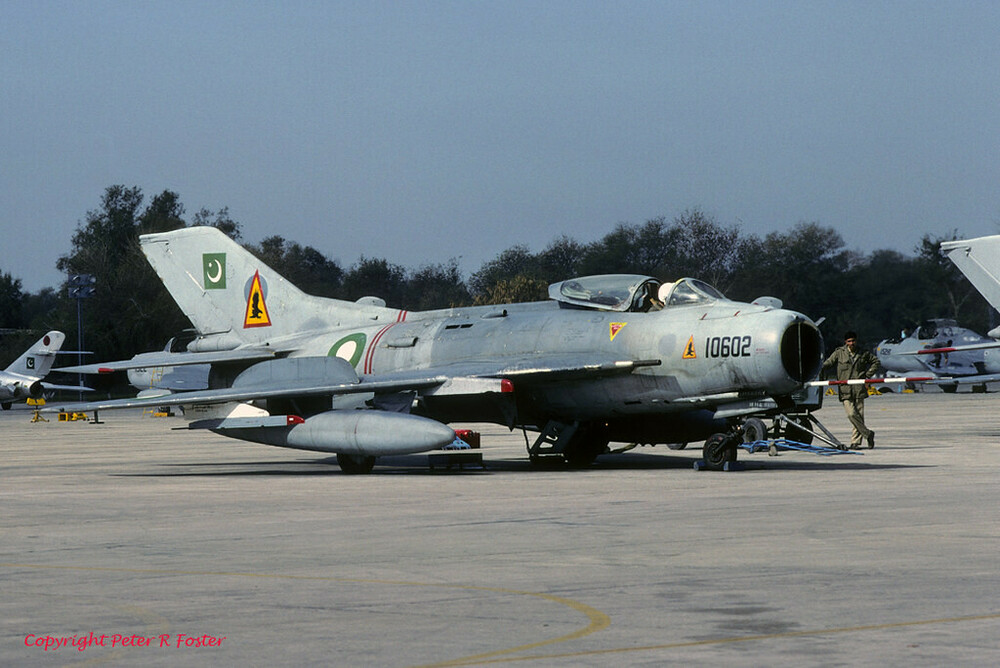

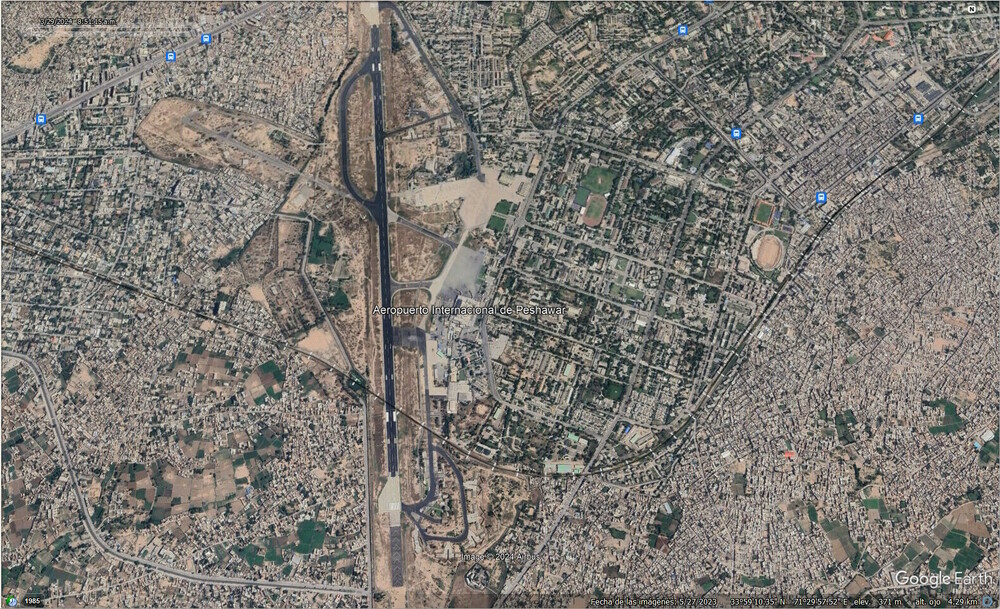
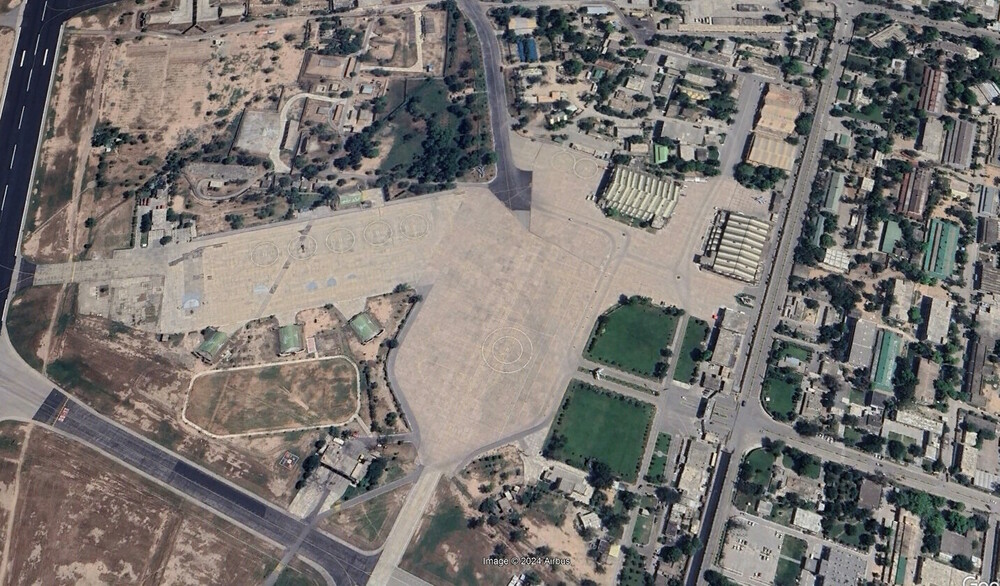

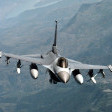



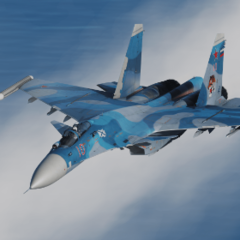

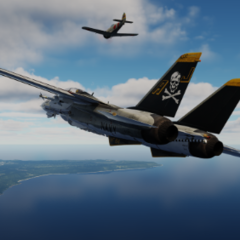

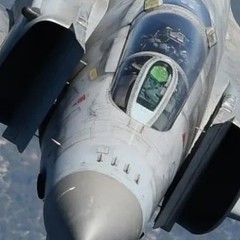
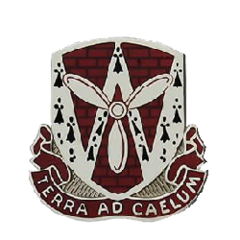

.thumb.png.4c107b29b8c21ed90c167a0dac025fda.png)



-compressed.thumb.jpg.45a40e3f639225f93504e709ab893b82.jpg)
